Spiritual Satanism Vs Theistic Satanism: Autonomy!
Spiritual Satanism and Theistic Satanism are two distinct religious frameworks that regard Satan as a central figure, but they differ significantly in beliefs and practices.
Spiritual Satanism focuses on self-improvement and spiritual growth through a symbolic understanding of Satan. It is often seen as an individualistic path that uses Satan as a symbol of personal freedom, autonomy, and enlightenment.
Spiritual Satanists do not necessarily worship Satan as a deity but view him as a metaphor for certain virtues or ideals.
On the other hand, Theistic Satanism entails the worship of Satan as an actual deity. It is a religious practice that involves the belief in and worship of Satan as a sentient, supernatural being.
Followers of Theistic Satanism often engage in traditional religious practices such as prayers, rituals, and celebrations dedicated to Satan.
Spiritual Satanism and Theistic Satanism have distinct approaches to their beliefs and practices regarding Satan.
Spiritual Satanism emphasizes a symbolic interpretation of Satan. It focuses on personal growth and enlightenment, using Satan as a means to explore and develop oneself spiritually.
This path is individualistic and self-centered, with followers seeking to embody the virtues and ideals represented by Satan symbolically.
Theistic Satanism, on the other hand, revolves around the worship of Satan as a deity. Followers of Theistic Satanism believe in the existence of Satan as a sentient, supernatural being.
They engage in rituals, prayers, and other religious practices to honor and communicate with Satan. Theistic Satanism involves a direct reverential relationship with Satan as a divine figure.
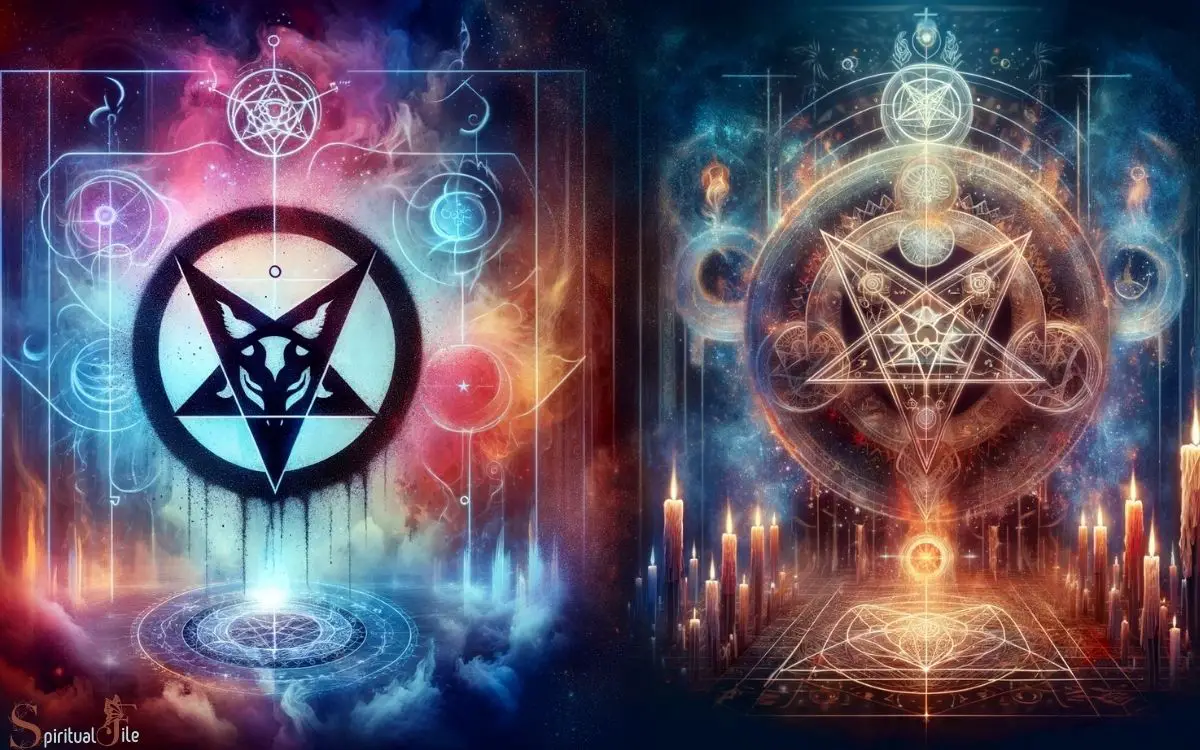
Key Takeaway
4 Aspects: Spiritual Satanism Vs Theistic Satanism
| Aspect | Spiritual Satanism | Theistic Satanism |
|---|---|---|
| Belief in Satan | Symbolic or metaphorical | Literal belief in Satan |
| Worship of Satan | No worship, focus on self | Worship of Satan as deity |
| Deity Perspective | Non-theistic, self-empowerment | Theistic, deity veneration |
| Rituals | Symbolic, self-improvement | Rituals for Satan worship |
Origins and Historical Context

One can trace the origins and historical context of both Spiritual Satanism and Theistic Satanism to the early modern period.
Spiritual Satanism, rooted in individualism and personal empowerment, draws from various esoteric and occult traditions, such as Gnosticism and Hermeticism. It often emphasizes the symbolic representation of Satan as a rebellious figure against oppressive forces.
On the other hand, Theistic Satanism, with its focus on the worship or veneration of Satan as a literal deity, has historical ties to Christian heresies and occult practices.
It gained momentum during the Satanic Panic of the 1980s, with the emergence of organized groups like the Church of Satan and the Temple of Set.
Understanding the historical underpinnings of these belief systems offers insight into their development and divergent philosophies.
Beliefs About Satan
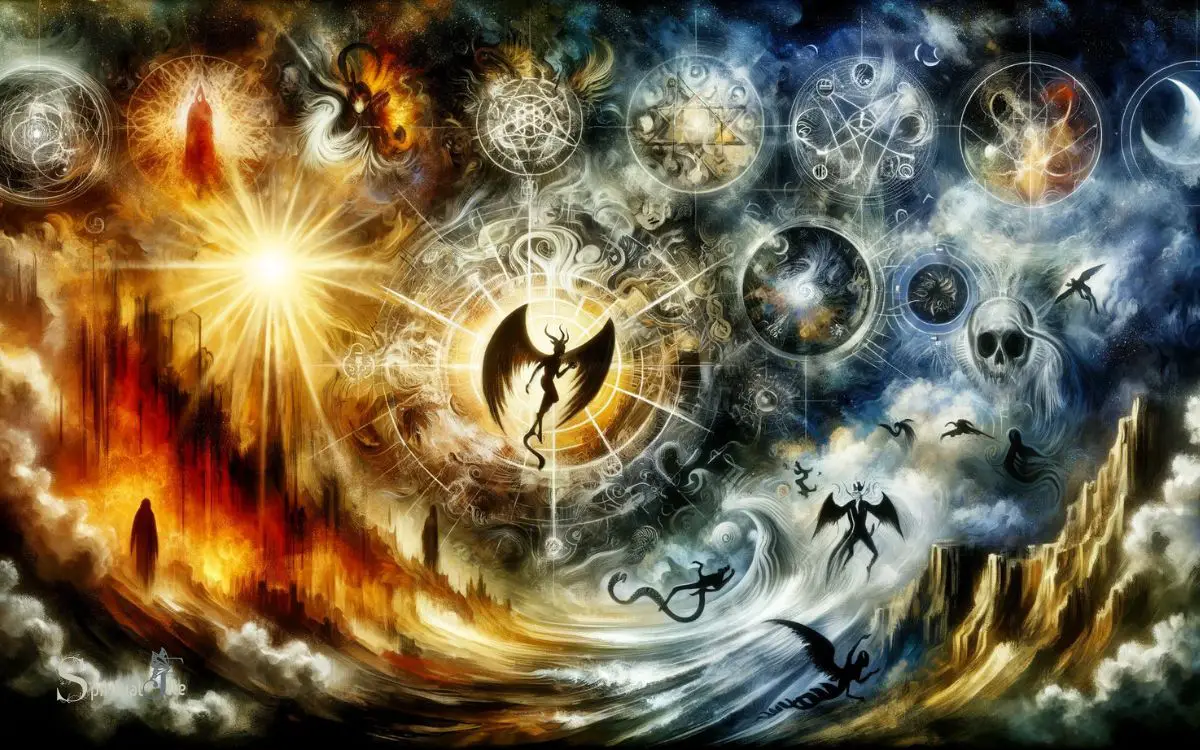
Beliefs about Satan vary widely among Spiritual Satanists and Theistic Satanists. Spiritual Satanists may view Satan as a symbol of individualism, rebellion, and enlightenment.
Theistic Satanists, on the other hand, believe in Satan as a literal deity with supernatural powers and influence.
These differing perspectives on the nature of Satan form the core of the ideological distinctions between the two groups.
Satan as Symbol
How are the perceptions of Satan as a symbol distinct in Spiritual Satanism and Theistic Satanism?
In Spiritual Satanism, Satan is often viewed as a symbol of personal empowerment, individualism, and rebellion against societal norms.
Followers of Spiritual Satanism may see Satan as a representation of enlightenment, knowledge, and the pursuit of personal truth.
This perspective does not necessarily involve the worship of Satan as a deity, but rather the embrace of the symbolism associated with Satan as a means of self-actualization.
On the other hand, in Theistic Satanism, Satan is often viewed as an actual deity to be revered and worshipped.
Followers of Theistic Satanism may believe in the existence of Satan as a supernatural being and engage in rituals and practices aimed at establishing a connection with Satan as a divine entity.
Satan as Deity
In Spiritual Satanism, Satan is often perceived as a symbolic representation of personal empowerment and rebellion against societal norms, while in Theistic Satanism, followers may regard Satan as an actual deity to be revered and worshipped.
| Beliefs about Satan in Spiritual Satanism | Beliefs about Satan in Theistic Satanism |
|---|---|
| Symbolic representation of personal empowerment | Actual deity to be revered and worshipped |
| Emphasis on self-determination and individualism | Worship through rituals and prayers |
| Viewed as a psychological archetype | Seen as a powerful supernatural being |
| Focus on internal spiritual development | External worship and supplication to Satan |
| Encourages personal growth and self-improvement | Calls for submission and devotion to Satan |
These differing beliefs about Satan shape the practices and rituals within each form of Satanism, reflecting the varied interpretations and understandings of Satan as a deity.
Views on Ritual and Worship
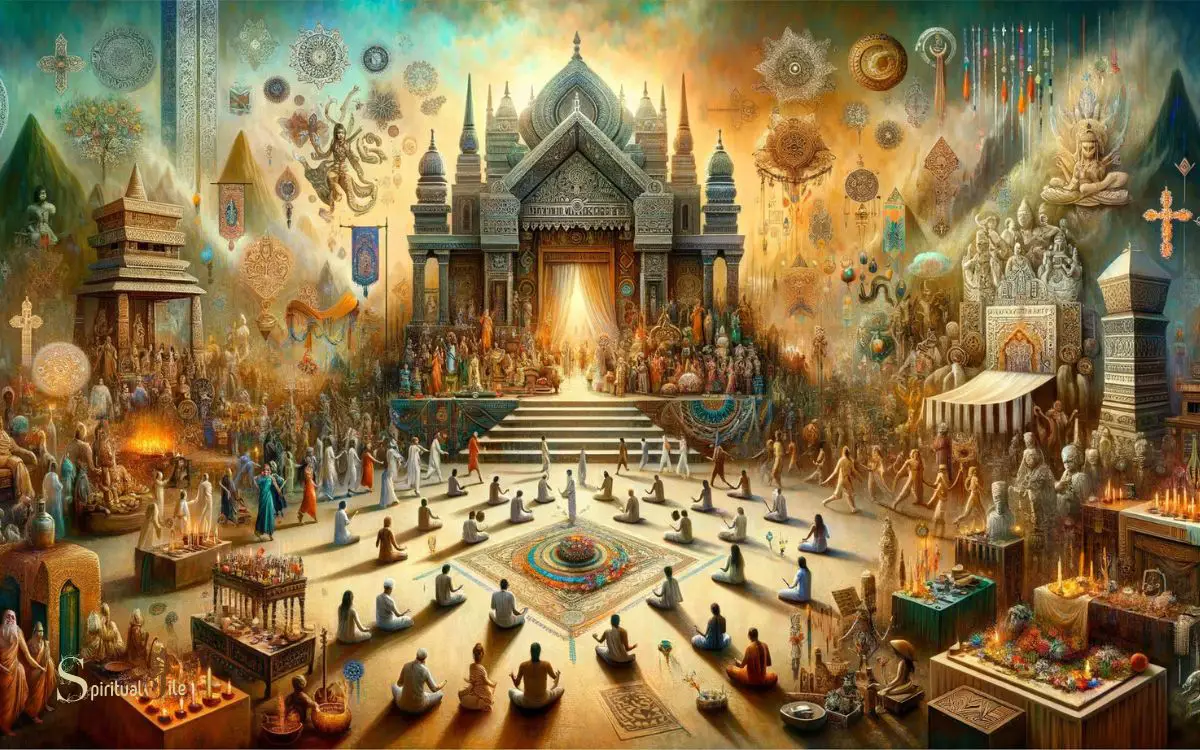
Both Spiritual Satanism and Theistic Satanism emphasize the importance of ritual and worship in their respective practices.
Spiritual Satanism views ritual as a form of self-expression and empowerment, often focusing on meditation, visualization, and personal development.
Worship in this context is centered around the self and the pursuit of individual spiritual growth, with Satan as a symbol of defiance against oppressive forces.
Theistic Satanism, on the other hand, places a stronger emphasis on ritualistic worship directed towards Satan as a deity.
These rituals often involve invocations, offerings, and ceremonies aimed at establishing a connection with Satan and other infernal entities.
Theistic Satanists believe that through these rituals, they can gain favor, guidance, and empowerment from Satan, whom they see as a real and powerful being.
Community and Organizational Structure
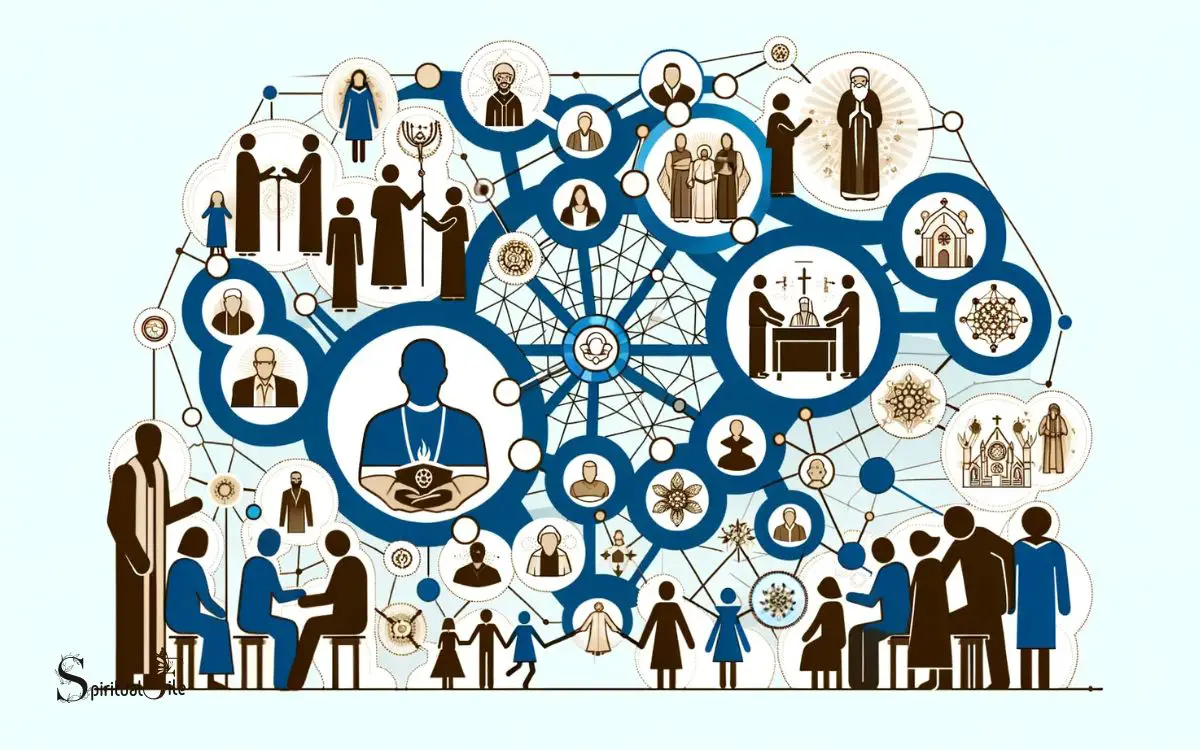
The community and organizational structure within Spiritual Satanism and Theistic Satanism encompass aspects such as leadership and hierarchy.
These elements are integral to understanding how each belief system operates and how they foster a sense of belonging and unity among their members.
Rituals and gatherings also play a significant role in both forms of Satanism. These practices provide opportunities for members to come together, connect spiritually, and strengthen their bond with Satan.
Through rituals, individuals are able to express their devotion, seek guidance, and participate in communal experiences.
Leadership and Hierarchy
Leadership and hierarchy in both Spiritual Satanism and Theistic Satanism are often characterized by a strong emphasis on individual autonomy and self-determination.
Both belief systems generally reject traditional hierarchical structures and instead prioritize personal empowerment and self-leadership.
However, there are differences in how this emphasis on autonomy translates into community and organizational structure.
| Aspect | Spiritual Satanism |
|---|---|
| Leadership Style | Largely decentralized, with emphasis on personal spiritual growth and individual connection with Satan. |
| Organizational Structure | Minimal formal structure, often organized into small, autonomous groups or practiced individually. |
| Community Engagement | Emphasis on online communities and individual practice, with minimal formal community structures. |
| Decision-Making | Usually based on individual understanding and interpretation of Satanic principles. |
In contrast,
| Aspect | Theistic Satanism |
|---|---|
| Leadership Style | Can vary from hierarchical to more egalitarian structures, depending on specific beliefs and traditions. |
| Organizational Structure | May have formalized groups, covens, or organizations led by recognized leaders. |
| Community Engagement | In-person gatherings, rituals, and structured community involvement. |
| Decision-Making | Leaders or elders may play a significant role in guiding and making decisions for the community. |
Rituals and Gatherings
In discussing the aspect of rituals and gatherings within Spiritual Satanism and Theistic Satanism, it is important to understand how these practices contribute to the community and organizational structure of each belief system.
Spiritual Satanism:
- Emphasizes individualism and personal empowerment through rituals.
- Encourages solitary practices and self-initiation to connect with Satan and the demons.
Theistic Satanism:
- Often involves group rituals and gatherings to honor Satan and other deities.
- Can have organized hierarchical structures with leaders and clergy overseeing religious ceremonies.
These rituals and gatherings play a crucial role in shaping the community and organizational dynamics within each belief system, reflecting the diverse ways in which individuals come together to express their devotion and connect with their spiritual beliefs.
Relationship With Other Deities

An essential aspect of the relationship with other deities in both Spiritual Satanism and Theistic Satanism is the acknowledgment of alternative belief systems and pantheons.
Both belief systems recognize the existence of other deities and spiritual entities beyond Satan or the adversarial deities. However, their attitudes and approaches toward these other deities differ.
| Spiritual Satanism | Theistic Satanism |
|---|---|
| Emphasizes self-deification and personal empowerment. | Views Satan as a literal deity to be worshipped and revered. |
| Acknowledges other deities and spiritual entities as symbolic or archetypal manifestations of the subconscious. | Recognizes the existence of other deities but views them as subordinate to Satan or the adversarial deities. |
| Encourages individual interpretation and eclectic incorporation of diverse spiritual beliefs. | Often adheres to specific traditional or established pantheons alongside Satanism. |
| Focuses on personal spiritual growth and development. | Places emphasis on devotion, worship, and rituals dedicated to Satan and associated deities. |
| Does not necessarily engage in formal worship or rituals. | Engages in structured rituals and practices to honor and commune with Satan and other deities. |
Interpretation of Sacred Texts
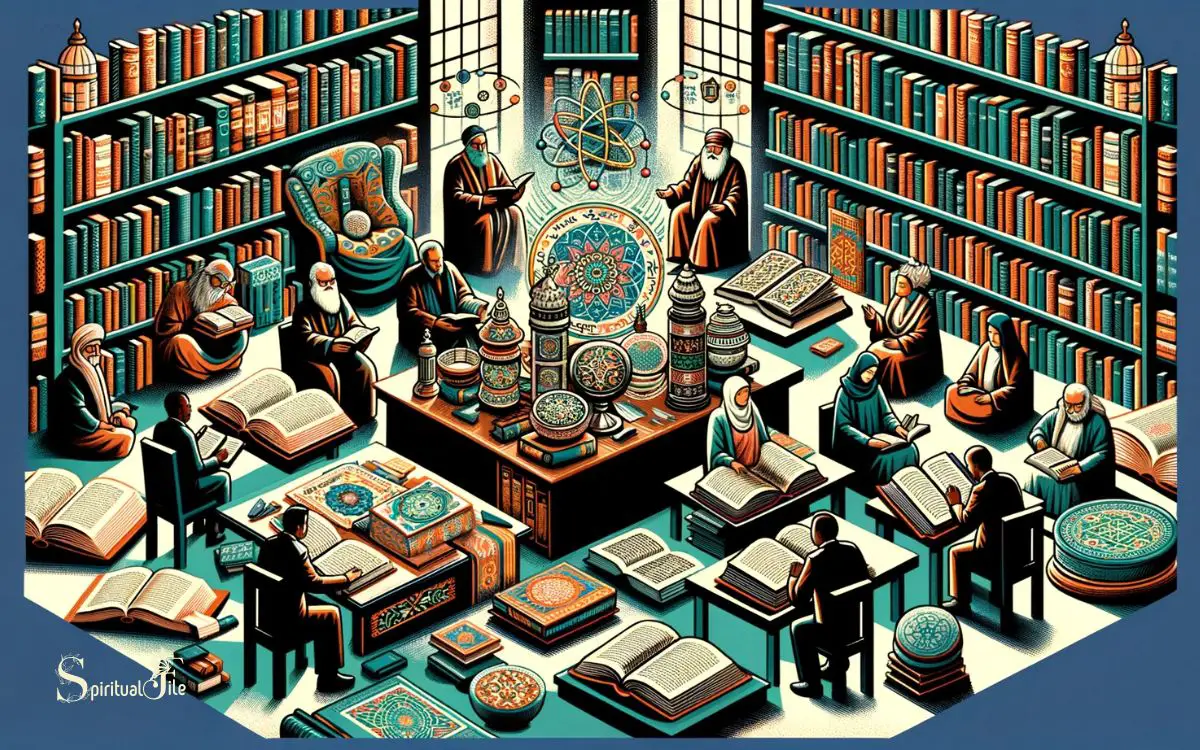
The Spiritual Satanism’s interpretation of sacred texts emphasizes individual introspection and subjective understanding. This approach encourages followers to seek personal meaning within the texts rather than adhering to a strict, uniform interpretation.
When examining sacred texts, Spiritual Satanists focus on the following:
- Personal Revelation: Emphasizing the importance of personal experiences and insights when engaging with sacred texts.
- Encourages Individual Growth: Views sacred texts as tools for personal development and spiritual evolution.
- Symbolic Interpretation: Acknowledges the symbolic nature of many passages, allowing for a deeper and more personalized understanding.
- Promotes Inner Reflection: Encourages introspection and the application of symbolic meanings to one’s own life experiences.
This interpretative approach fosters a deep and personal connection to the sacred texts, allowing for diverse and individualized spiritual growth.
Attitudes Towards Morality and Ethics

Attitudes towards morality and ethics differ significantly between Spiritual Satanism and Theistic Satanism, reflecting their distinct interpretations of sacred texts.
In Spiritual Satanism, morality is often seen as subjective, with an emphasis on individualism and personal responsibility. Adherents are encouraged to embrace their desires and pursue personal growth without being bound by traditional moral codes.
Theistic Satanism, on the other hand, may adopt a more nuanced approach, acknowledging the existence of moral principles while rejecting societal norms that are deemed oppressive.
Theistic Satanists may draw ethical guidance from historical and cultural sources, often emphasizing personal empowerment and autonomy.
Both paths prioritize personal agency and the pursuit of one’s true will, but their perspectives on morality and ethics reflect their unique theological foundations.
Influence on Personal Development

In shaping personal development, Spiritual Satanism and Theistic Satanism exert distinctive influences that stem from their theological perspectives and practices.
Spiritual Satanism: -Emphasizes self-empowerment and individualism, encouraging followers to explore their inner potential and seek personal growth through rituals and meditation.
Promotes the idea that individuals have the power to shape their own destinies, fostering a sense of autonomy and self-determination.
Theistic Satanism: Focuses on forming a personal relationship with Satan or other demonic entities, often through prayer, devotion, and ritual practices.
Encourages the development of qualities such as discipline, loyalty, and perseverance, as these are seen as essential for honoring and serving Satan.
These contrasting approaches to personal development reflect the divergent theological underpinnings of Spiritual Satanism and Theistic Satanism.
How Does Theistic Satanism Differ from Spiritual Satanism in Terms of Beliefs About Good and Evil?
Theistic Satanism and Spiritual Satanism diverge in beliefs about good and evil. Theistic Satanism views Satan as a literal deity, while Spiritual Satanism sees Satan as a symbol of independence and enlightenment. According to Nick Groff’s spiritual war explanation, both groups are engaged in a constant struggle between opposing forces.
FAQ About Spiritual Satanism Vs Theistic Satanism
What Are the Differences in the Practices and Rituals Between Spiritual Satanism and Theistic Satanism?
The practices and rituals of spiritual Satanism often focus on self-improvement, personal empowerment, and individual spiritual growth.
Theistic Satanism, on the other hand, involves the worship and veneration of Satan as a literal deity.
How Do Spiritual Satanists and Theistic Satanists View the Concept of Sin and Redemption?
The concept of sin and redemption is viewed differently by spiritual Satanists and theistic Satanists.
Their perspectives often stem from their philosophical and ideological beliefs, shaping their understanding of moral accountability and the pursuit of spiritual absolution.
Do Spiritual Satanists and Theistic Satanists Believe in the Existence of a Literal Satan, or Do They View Satan as a Symbolic Figure?
Both spiritual Satanists and theistic Satanists hold differing views on the existence of a literal Satan.
While some see Satan as a symbolic figure representing individualism and rebellion, others believe in a literal entity.
What Are the Attitudes of Spiritual Satanism and Theistic Satanism Towards Other Religious and Spiritual Traditions?
Both spiritual Satanism and theistic Satanism exhibit diverse attitudes toward other religious and spiritual traditions.
While some adherents may embrace tolerance and coexistence, others may reject or oppose these traditions based on their respective beliefs and values.
How Do Spiritual Satanists and Theistic Satanists Approach the Concept of Free Will and Individual Autonomy Within Their Belief Systems?
Both spiritual Satanists and theistic Satanists emphasize the concept of free will and individual autonomy within their belief systems.
They view these principles as essential for personal growth, empowerment, and the pursuit of spiritual enlightenment.
Conclusion
The differences between spiritual Satanism and theistic Satanism are significant and reflect diverse interpretations of Satan and his role in the spiritual realm. These contrasting belief systems offer unique perspectives on ritual, worship, and morality.
As the two paths diverge, they create a captivating tapestry of spiritual exploration, guiding individuals through the depths of their own understanding and shaping their personal development like branches reaching for the sky in a dark forest.






